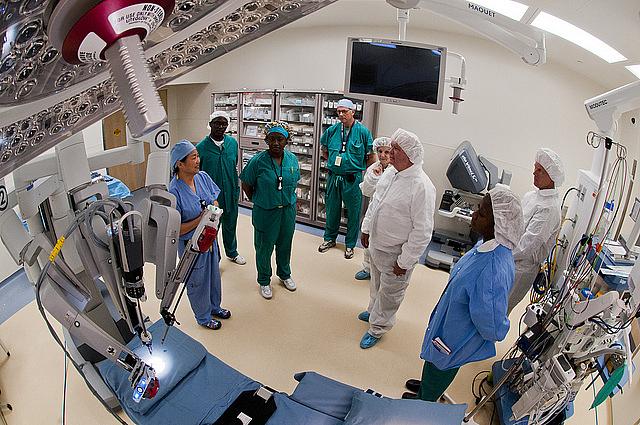Well Sourced: Strengthen your health reporting by using discharge data

Do the data really reflect your local hospital's marketing claims?
Do you think Osh Pod might have those records?
Not long after I first started health reporting, I discovered the Office of Statewide Health Planning and Development (OSHPD). Everybody with more experience than me called the agency Osh Pod, so I started asking that question with some frequency. Signaling, of course, that I knew what I was talking about. Maybe.
As I wrote on Friday, OSHPD – and the same is likely true for the equivalent agency in your state – tracks a huge array of health-related information. In this post, I’m going to focus on the information that has generated the most stories for me.
Patient discharge data: The data include what patients came in for, how they were treated and where they went after they left (i.e. to another hospital, home or to a funeral parlor.)
Start here:
http://www.oshpd.ca.gov/HID/Products/PatDischargeData/PublicDataSet/index.html
The records do not include patient names or doctor names. The only patient identifiers are ages and the month and year the patients were admitted. It also includes the “Expected Source of Payment”: public assistance, private insurance, workers’ compensation, etc. You can compare mortality and morbidity data. You can find out where hospitals are making their money (or losing it). If a hospital boasts of having a “breast cancer center” or a “diabetes center,” you can see how frequently the hospital has cared for those types of patients. Creating these “centers” is often just a way to bring in more revenue, not evidence of excellence.
A quick start for the uninitiated would be to download a few of the summary reports by state or county. For example, if you look up Riverside County, you can get a sense of the kind of care people are receiving by looking at the total number of discharges and then the numbers for hundreds of different procedures. There were 210,171 discharges from acute care hospitals in Riverside County in 2013. (Note that the same patient could be in and out of a hospital more than once in a year, meaning they would count for multiple discharges.) Of those, 15 percent were babies being born while less than 2 percent were heart bypass surgeries.
You also can quickly see how much time people are spending in health facilities, which can be an indicator of efficiency and quality of care. In Riverside County, you’ll find that the average length of stay in an acute care hospital was 4.1 days in 2013 (compared to a state average of 4.2). The average length of state in a skilled-nursing facility was 28 days (compared to 63 statewide). You can also find out how long people are kept in the hospital for hundreds of different procedures, including kidney transplants (5.8 days).
SUGGESTION: Take a hospital in your area. Ask them where they think they excel or see what they’re using in their marketing materials. Then go to the discharge data and count how often they perform procedures in this area compared to other hospitals or the statewide average. Look at patient deaths. Even though that number might come with caveats, it could give you a good indicator if it is much higher (or lower) than the average. Make sure you run any data by the hospital and outside experts.
EXAMPLE: When I was at The Orange County Register in 2003, we put together a comprehensive report card on all local hospitals, making heavy use of patient discharge data to show differences in mortality and morbidity rates.
Photo by Army Medicine via Flickr.

